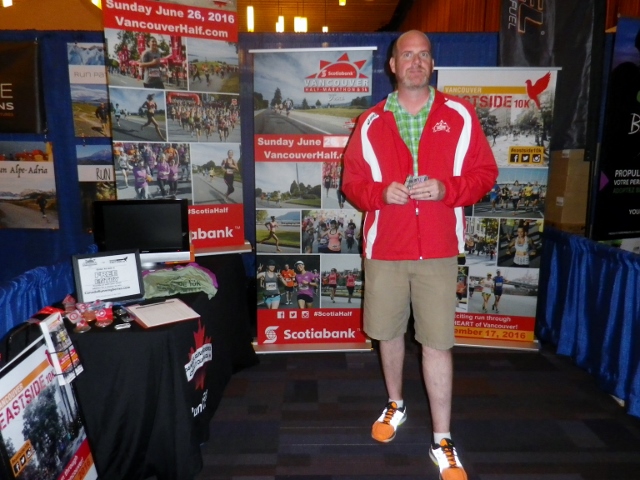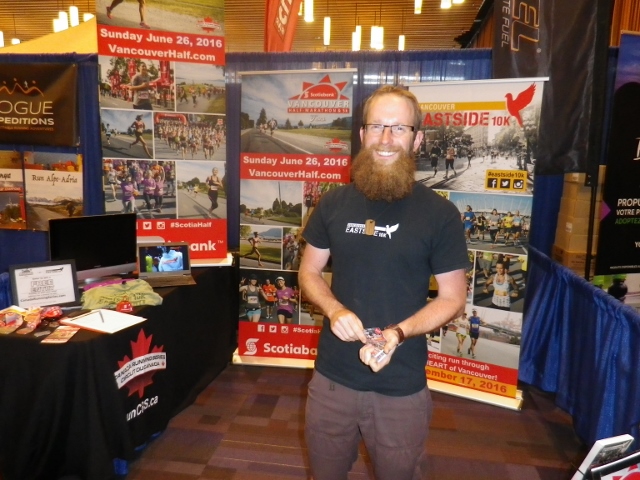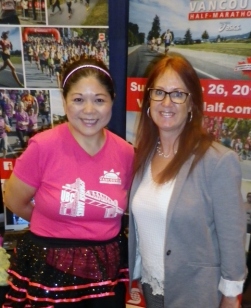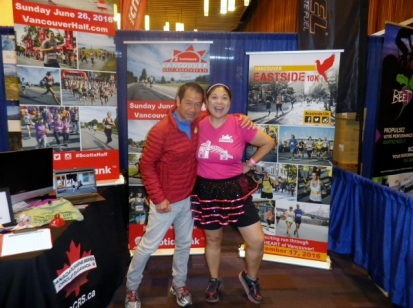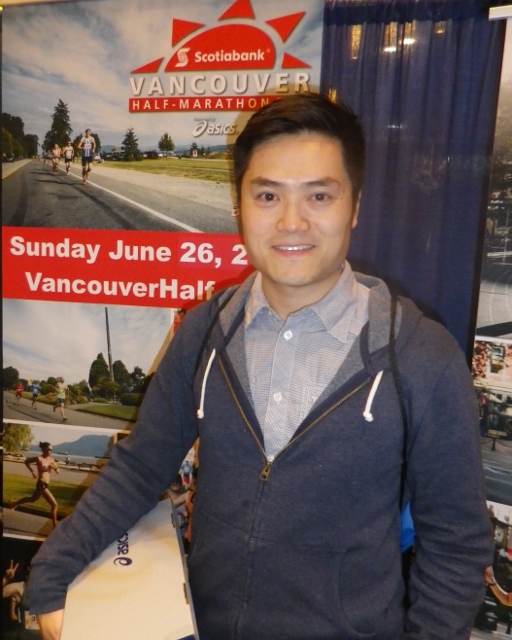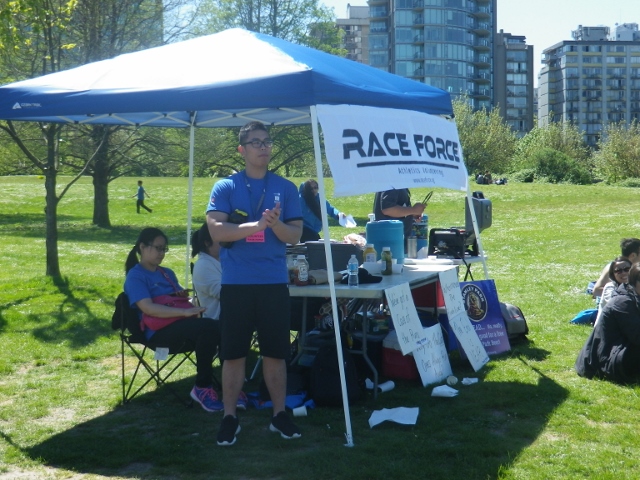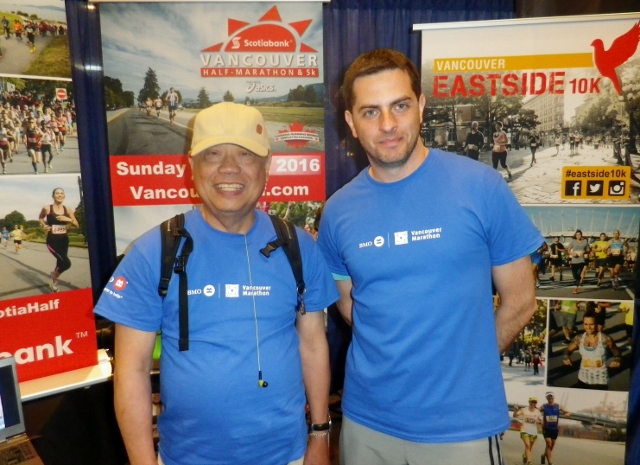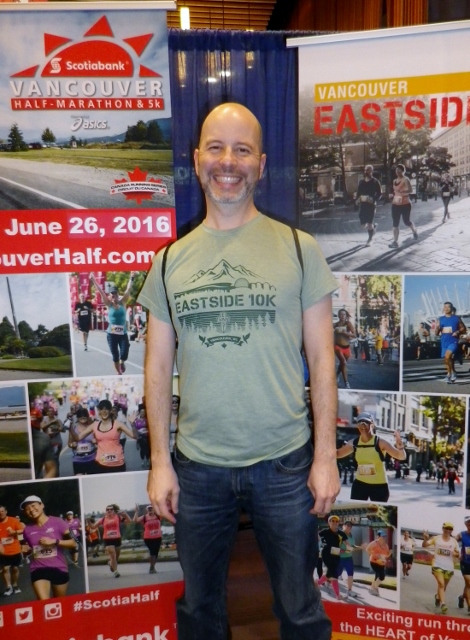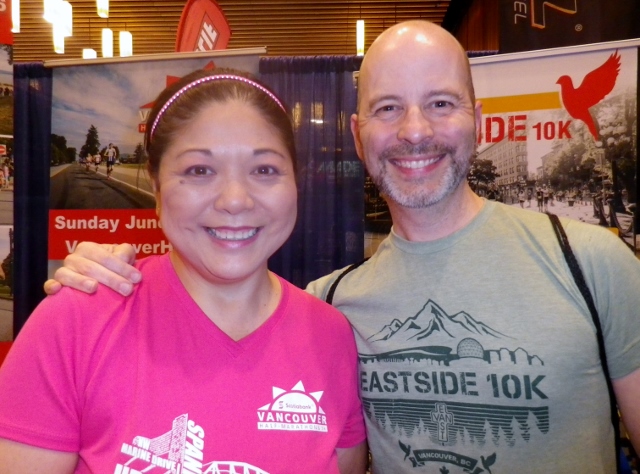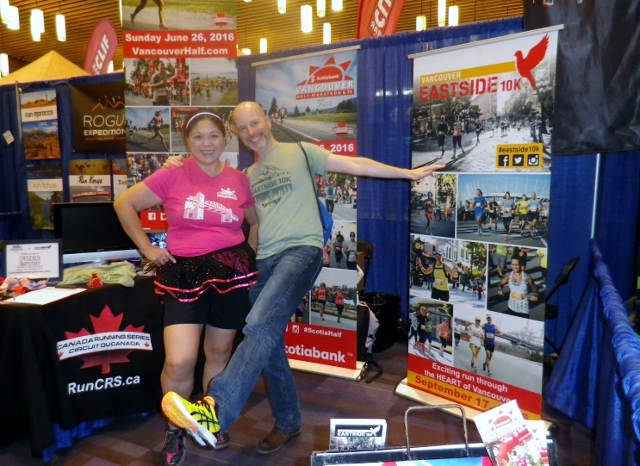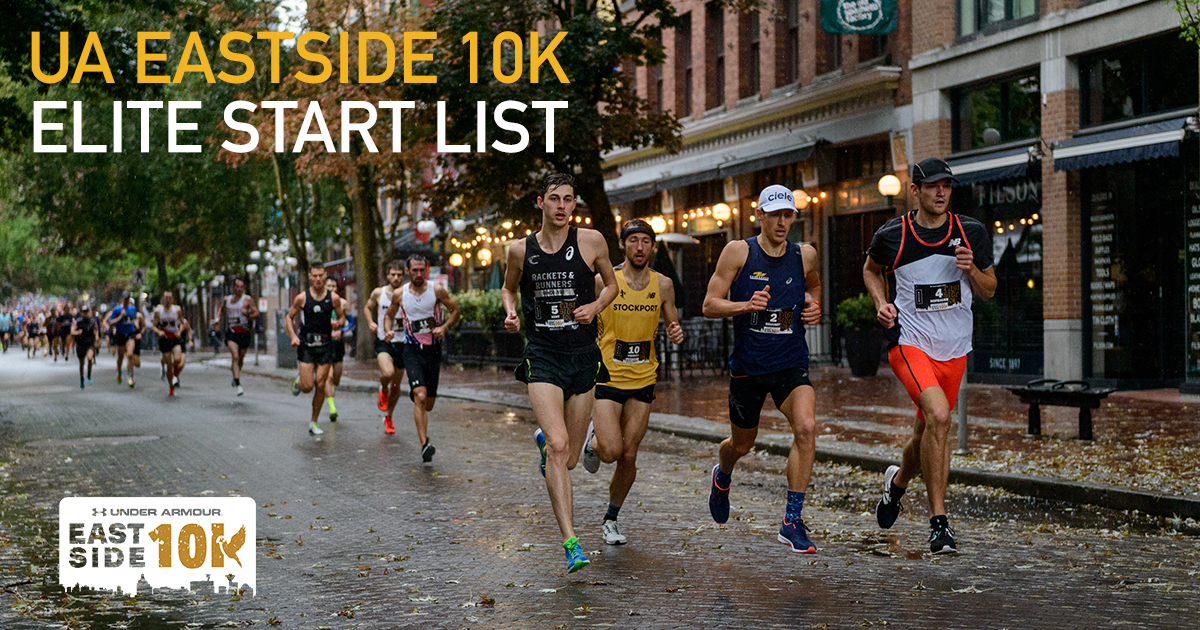By Amy Friel.
TORONTO June 6th 2016.
The marathon is a unique and curious event. In one day, on one course, you can witness the complete spectrum of athletic endeavour – from elite distance runners chasing down national records or Olympic standards, to newly-minted marathon rookies pushing themselves to bold new personal challenges.
And year after year, somewhere in the thick of the exhausting, frenzied celebration of human tenacity that is the Scotiabank Toronto Waterfront Marathon, a handful of runners have been quietly and consistently rewriting the record books.
It all began a little over a decade ago, in 2004, when Torontonian Michal Kapral ran down the Guinness World Records title for the fastest marathon while pushing a pram (2:49:44) with daughter Annika in tow. A year later, Kapral returned to STWM to set yet another Guinness World Records title, this time, for “joggling” – running while juggling three balls across the entire marathon distance.
Since then, the Scotiabank Toronto Waterfront Marathon has played host to myriad Guinness World Record-setting runs – from the fastest marathon dressed as a mascot in 2010 to the fastest marathon in full hockey kit (stick included!) in 2012.
And while some records, like the fastest marathon dressed as a zookeeper (held by Bridget Burns in 4:08:17, and run in support of the High Park Zoo), lie on the periphery of the competitive fray, others are at once rapidly progressing and hotly contested.
For Nicholas Mizera, running to a 1:35:47 finish in the 2015 STWM half-marathon was both a particularly stylish personal best time and a Guinness World Records achievement for the fastest half-marathon in a suit. His record, which caught the attention of both Runners World and several other bespoke-suited distance runners, has been bettered twice in the less than a year since he set it (three times, in fact, if you count a recent 1:06:42 by Japan’s Yuki Kawauchi, albeit on an uncertified course), a progression which shows little sign of slowing down.
And when Michael Kapral’s joggling record was bettered by rival Zach Warren in 2005, the Scotiabank Toronto Waterfront Marathon became the stage for his redemption, where he recaptured the title two years later in a blistering 2:50:12 finish, a mark which remains uncontested to this day.
“We love Guinness World Records!” says Canada Running Series race director Alan Brookes. “They are the perfect combination of costumes and sport. Costume runners contribute massively to the festive air of big-city marathons; at the same time, racing for records keeps the sport element strong!”
For those up to the task of running their way into the Guinness World Records record books, the flat and fast Toronto course offers an ideal venue to carry them to their goal. It’s little wonder the number of Guinness World Records being set at the Scotiabank Toronto Waterfront Marathon has been growing steadily over the past decade. And with more runners than ever pledging to chase after Guinness World Records marks this October, 2016 is shaping up to be a record year for Canada’s premier big-city marathon – pun intended.
“We are excited to once again be partnering with the Scotiabank Toronto Waterfront Marathon at this year’s race” said Guinness World Records PR Manager, Kristen Ott. “From creative costumes to record challenges that require additional agility or skill, we’re looking forward to seeing what records will be broken at 2016 marathon and half-marathon!”
Whether you want to set the record for the fastest half-marathon run dressed as bottle (like Toronto’s Allegra Swanson), you’re looking to better the mark for the fastest marathon dressed as a chef (like Daniel Janetos of The Food Runners), or you’re chasing the mark for the fastest half-marathon dressed as fast food (as Pace & Mind’s Jess Collins hopes to do), the Guinness World Records challenge at the Scotiabank Toronto Waterfront Marathon offers the perfect opportunity to make marathon history on the streets of Toronto.
As for Nicholas Mizera’s suited-up half-marathon record, the competitive zeal he inspired with his dapper 2015 run seems to have taken on a life of its own; fellow runners Jennifer Wilson and Timo Kantereit are now looking to set and better the male and female marks respectively, on this year’s half-marathon course. And though Michael Kapral has long since conceded his former record for fastest marathon pushing a pram, fellow record-chaser Calum Neff hopes to bring the title back to the city by bettering the existing 2:42:21 mark on the Toronto course this fall, with daughter Aley along for the ride.
“I’m excited to try and bring the stroller marathon record back home to Canada and to Toronto,” Neff says. “The city has always been home-base for me growing up around the world, and now I can share it with my daughter, just like I do running.”
The Guinness World Records challenge at the Scotiabank Toronto Waterfront Marathon offers runners the opportunity to chase after the odd, off-beat, and often peculiar corners of athletics history, and run their way into the record books. For marathoners hungry for a challenge, it is a unique and memorable way to take on a distance that, like the records themselves, offers something for everyone.
If you would like to attempt a marathon or half marathon record at the 2016 Scotiabank Toronto Waterfront Marathon, please click here for more information.
A few records we’d love to see broken at this year’s race include:
1. Fastest marathon or half-marathon dressed as a landmark.
2. Fastest marathon or half-marathon dressed as a cheerleader.
3. Fastest marathon or half-marathon in a police uniform.
4. Fastest marathon or half-marathon run by a pair of siblings.
5. Fastest marathon or half-marathon dressed as a snowboarder.
6. Fastest marathon or half-marathon dressed as a snowman.
7. Fastest marathon or half-marathon dressed as a Doctor.
8. Fastest marathon or half-marathon dressed as a vegetable.
9. Fastest marathon or half-marathon in a baseball uniform.
10. Fastest marathon or half-marathon dressed as a bottle.
11. Fastest marathon or half-marathon dressed in an ice hockey kit.
12. Fastest half-marathon in a suit.
13. Fastest marathon or half-marathon in a lacrosse kit.
15. Fastest marathon or half-marathon dressed as a shoe.
Amy Friel (@AmyFrii) is a Toronto-based freelance writer, two-time marathoner, and unabashed running geek. As a Digital Champion for the 2015 Scotiabank Toronto Waterfront Marathon, Amy had a taste of the city’s vibrant running community – and hasn’t been able to stop writing about it since. Her work has been featured in iRun magazine, the Globe and Mail, as well as on her blog thelongslowdistance.com















 And what exactly is that, a Digital Champion? Well, we are a diverse bunch of runners – different ages, who run different speeds, at different stages in our running journey. But what we have in common is our love for the sport, and our enthusiasm for the Scotiabank Half and what it represents and means to us.
And what exactly is that, a Digital Champion? Well, we are a diverse bunch of runners – different ages, who run different speeds, at different stages in our running journey. But what we have in common is our love for the sport, and our enthusiasm for the Scotiabank Half and what it represents and means to us. I had intended to sign up for the Scotiabank Half in 2012 – and actually believed I had – but discovered just days before the race that I hadn’t registered. I took it as a sign and gave it a miss.
I had intended to sign up for the Scotiabank Half in 2012 – and actually believed I had – but discovered just days before the race that I hadn’t registered. I took it as a sign and gave it a miss.


